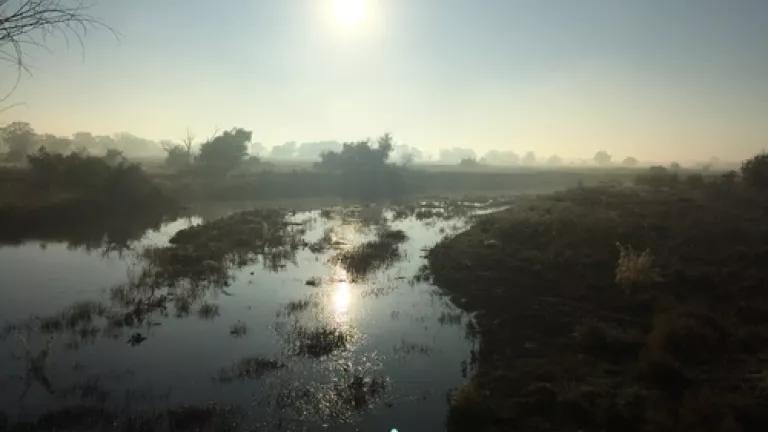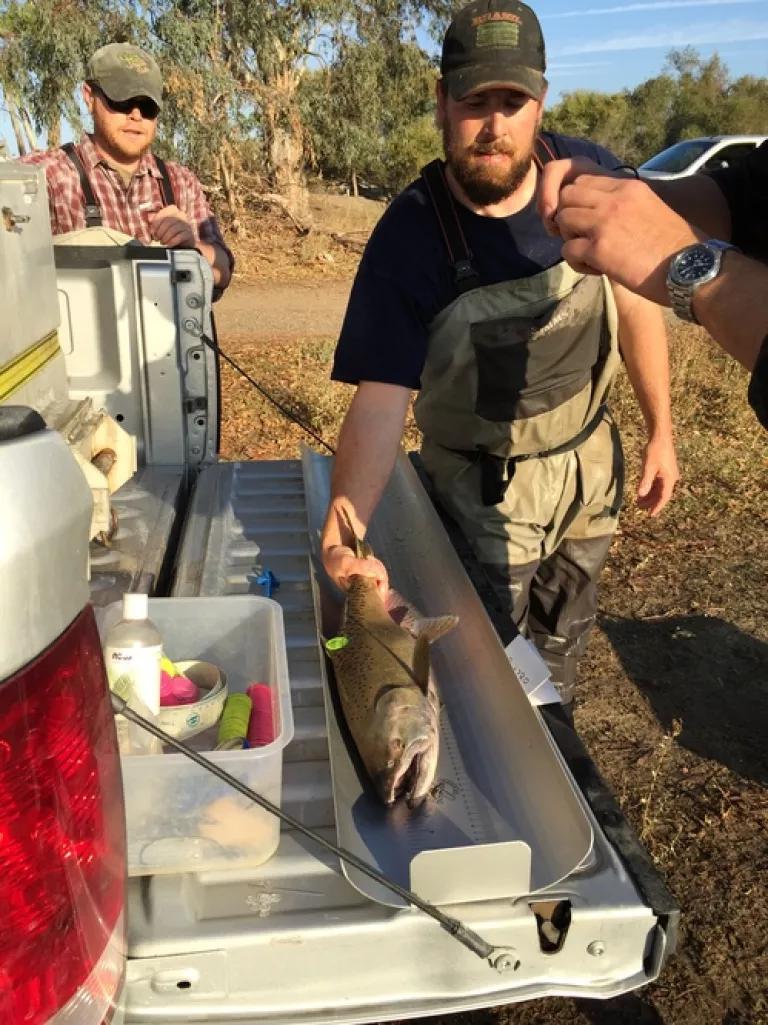
Not unlike an Indiana Jones movie where the mysteries of a lost Incan temple capture our attention, the San Joaquin River - lost for 60 years - has its own fascinating mysteries to reveal.
Earlier this month, the San Joaquin River Restoration Program (SJRRP) convened a two-day science conference in Los Banos, California to share recent findings from research investigations intended to guide one of the largest river restoration efforts in the nation. The Restoration Program's goal is to restore flows and a Chinook salmon fishery to the upper river while also improving flood protection and water management in the region as a whole.
Rediscovering the lost river
Starting in 2009, flows and salmon have been slowly reintroduced to the 150 miles of river from Friant Dam near Fresno, California to the Merced River confluence. Native fish, including the second largest run of Chinook salmon in the state, were lost when the river was dewatered by the operation of the dam in the 1940s. Forgotten for decades, the river ceased to be the heart of the San Joaquin Valley that it had been for wildlife and early settlers. But a historic settlement agreement in 2006 between the federal government, farmers and NRDC (representing a coalition of fishermen and environmentalists) brought new hope and life to California's second largest river.
What's so difficult about restoring a river?
Why can't we just release water and watch the fish return? Because the river has been transformed (i.e. dammed, channelized, and diverted) to provide water for agriculture - something the river will continue to provide into the future. Therefore the river will never have all the water it once had and nor will wildlife have the historically vast expanses of adjacent wetlands and forests. There are flood control and water supply structures that need to be retrofitted or replaced to allow fish to make it upstream. These things make our task more complicated and challenging. The Restoration Program will restore the river with on-average less than 20% of the historic flows. To do so will require efficient management of river flows, targeted restoration of essential habitat and contingency plans for additional support to cope with rare events like extreme droughts. Current research efforts provide the kind of information necessary to fine-tune these efforts and successfully overcome 60 years of degradation.
Did you know that...
- Scientists can track an adult salmon swimming upstream?
Scientists are implanting radio transmitters into the stomachs of adult fall-run Chinook to track their journey through the San Joaquin. This data shows where and how fast fish traveled and reveals preferred spawning habitats. It also suggests that early-returning fish are picky in their spawning grounds whereas the later-returning fish have to be more opportunistic. Scientists are also using this technology to learn about how fish manage extreme drought conditions and temperatures. Fish seem to select spawning sites further downstream when water temperatures from the dam are unusually high.

- Fish can get a lift downstream during a drought?
Low flows, high water temperatures, or fish passage barriers can prevent juvenile salmon from reaching the ocean. When this occurs, scientists can capture fish in weirs, give them a ride in a tank truck, and then drop them off downstream. While there is no substitute for fish making the migration on their own, the data being collected will improve techniques for helping juvenile fish make it out to sea in future dry years.
- Birds can tell you about the success of river restoration?
A robust bird population is a strong indicator of a healthy ecosystem. Scientists are counting how many birds are living in an area before, during, and after restoration projects to measure progress in improving the health of the river and surrounding forests. Ultimately, restoration is successful when new habitat areas begin to be used by birds again - particularly bird species that have suffered from the loss of 95% of the Central Valley's riparian forests. For example, the successful levee breaches and flow management efforts on the San Joaquin River National Wildlife Refuge have led to population increases for Least Bell's Vireos and Yellow Warblers, both of which are protected species.
The journey continues
The Restoration Program has made significant progress toward improving the region's water supply and flood protection while achieving important river restoration milestones. Scientific research has not only supported all these efforts, but has also added to the body of restoration knowledge that can help unravel mysteries and overcome challenges on other damaged rivers. While there is still much to be learned, the Restoration Program is already gathering information necessary to create a living river that supports commercial and recreational fishing and the region's agricultural economy while also providing recreational opportunities for local communities.
